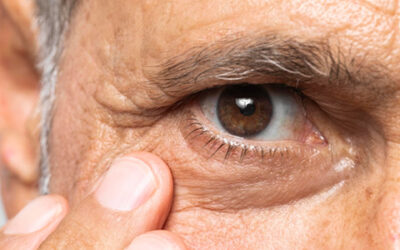UV and Your Eyes
Our eyes are sensitive to UVA and UVB rays, which can cause damage over years of exposure. The degree of radiation is dependent on factors such as altitude (higher altitudes have higher UV levels), and time of day we are exposed.
Other factors that can impact UV exposure risk include the environment’s reflective surfaces (such as being in the snow or near sand and water), medications, and where in the world we might be. Interestingly, research shows that your UV risk may be up to twice as high in the winter months, as snow is highly reflective.
The Risks Of UV Exposure For Our Eyes
UV exposure poses notable risks to our eyes, particularly to the cornea, lens, and retina of the eye. Eye problems that have been linked to repeated UV exposure over time include:
Cataracts: long-term exposure to UV radiation can cause the eye’s natural lens to become cloudy in areas, which is known as cataracts. This can cause blurred or reduced vision, sensitivity to light, and trouble seeing at night. The World Health Organization (WHO) estimates that up to 20% of all cataract cases are attributable to UV radiation and are preventable.
Macular degeneration: this is a serious condition that affects the central part of the retina and can lead to a loss of central vision. Long-term exposure to UV radiation may increase the risk of developing macular degeneration, alongside the natural ageing process. Age-related macular degeneration is the leading cause of blindness in adults 60 and older, but higher UV exposure at an earlier age has been significantly associated with early symptom appearance.
Pterygia: these visible growths on the eye’s surface can cause corneal problems and distort your vision.
Photokeratitis: this is sunburn on your cornea, where painful inflammation can cause temporary vision loss due to corneal damage.
Increased risk of cancers: according to the Skin Cancer Foundation, one-tenth of all skin cancers are found on the eyelid.
Protecting Your Eyes From The Effects Of UV
Sunglasses are literally sunblock for your eyes and the sensitive skin of the eyelids are surrounding area. They should fit well, be large enough, ideally wrap slightly and fit close to the eyebrows. Not all sunglasses are created equal, ones sold at The Optical Co are of the highest standard as required by Australian law.
Wearing a wide-brimmed hat can provide an additional layer of protection. It’s also important to remember that overcast conditions do not eliminate the need for eye protection, as even in the winter, reflected UV can still pose a threat. Additionally, reflected UV from buildings, sand, and water can also be hazardous during summer months – and snow glare in the winter is also dangerous.
Contact lenses can have a UV filter, however this is not effective at protecting the larger eye area, of course.
Select from our extensive range of UV safe eyewear across our clinics by selecting your preferred location here.
Recent Articles
Eye Conditions
Eye Conditions Optometrists treat and diagnose a wide range of vision and ocular health problems, and can provide advice, treatment plans or referrals to manage all manner of concerns.Whether you need an eye exam to update your spectacles, or have a question or are...
UV and Your Eyes
UV and Your Eyes Many of us remember the “no hat, no play” and “slip, slop, slap” messages from our schoolyard days. The recommendations for sun safety and our skin are well documented by the Cancer Council, but many of us forget about the impact that the sun and UV...



